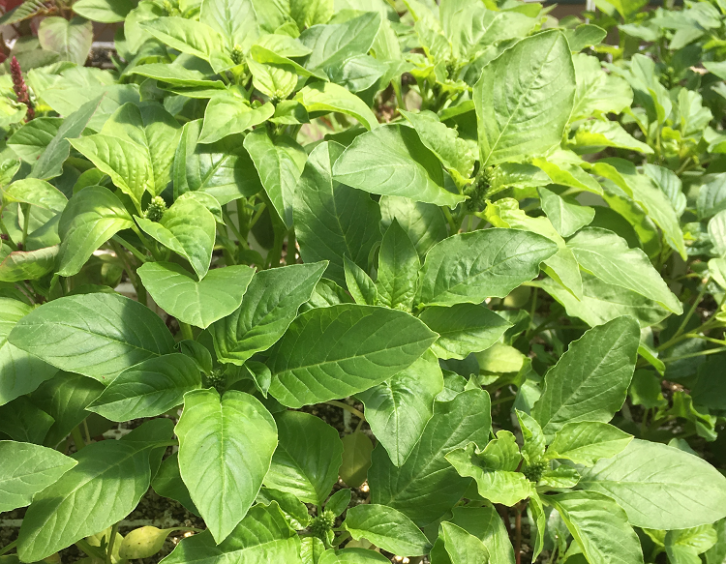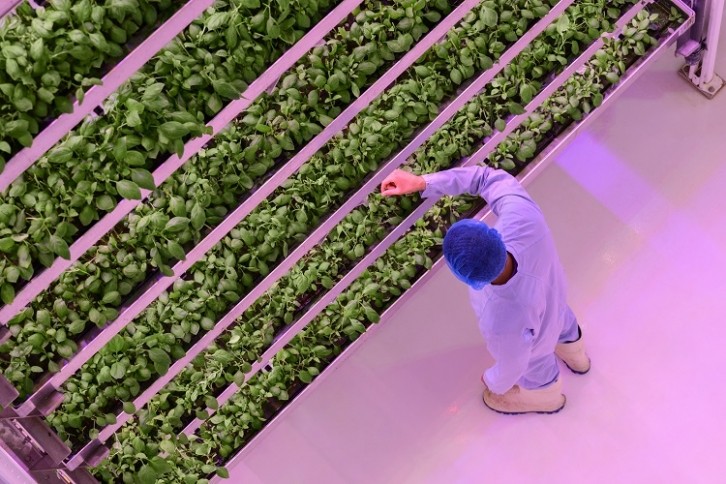Alternative protein from leaves? ‘Industry first’ development to reduce reliance on soy and pea

As vegan, vegetarian and flexitarian food markets grow, so too does demand for plant-based protein.
In the UK, which boasts one of the most developed plant-based food markets, innovators are working to reduce the country’s reliance on imports of plant proteins such as soy and pea with a home-grown alternative: protein derived from leaves.
An industry first
Under a two-year Innovate UK-funded research project coined Vertical Indoor Protein from Leaf (VIP Leaf), vertical farming facilities will be used to grow amaranth, a plant considered ‘undervalued’ in the current UK market.
The amaranth crops will then be used to develop a new source of plant protein, with potential economic, environmental, and health gains. Not only is amaranth considered a lower cost alternative to the more commonly used pea protein, but with the help of indoor farming technology, the ancient grain could be grown in the UK year-round.
What is particularly unique about this project is that it will combine vertical farming technology and crop biology to develop an alternative protein from the amaranth leaf.
“It’s certainly the first-time leaf-derived protein will be produced for the food industry and likely a first for amaranth as a whole plant as well,” explained Dr Jennifer Bromley, chief scientific officer at vertical farming technology business Vertical Future.
The company is leading the research project along with the University of York’s Centre for Novel Agricultural Products (CNAP), ag-tech centre Crop Health and Protection Limited (CHAP), vertical farming business Syan Farms and plant-based food development company Eat Curious.
Sustainability and nutritional benefits?
Amaranth is currently widely grown and consumed in Southern Africa, Southeast Asia, and South America. But since the crop perfects higher temperatures, the UK doesn’t support its growth at the moment, explained Dr Bromley.
This makes cultivating amaranth exclusively within vertical farming facilities an attractive proposition.
Such technology reduces the amount of land for cultivation, and can decrease carbon emissions emitted during the transportation process when the vertical farm is located on the food manufacturing site. Vertically farmed amaranth will have lower environmental costs compared to other more widely available plant proteins, believe the researchers.
There could also be nutrition wins. “In controlled conditions, we have carried out some preliminary work which improves leaf protein content to 40% of dry mass, significantly more than outdoor grown,” Dr Bromley told FoodNavigator.
Other nutritional benefit associated with amaranth include a high amino acid profile, its containing of fibre and other macro/micronutrients, being gluten-free, and having no known tolerances unlike soy and pea. “Amaranth also contains a lot of health-beneficial compounds such as antioxidants,” we were told.
Production for plant-based food
While cultivation is being aided by technologies sourced from Vertical Future, CHAP, and Syan Farms, development kitchens and manufacturing facilities will be provided by Eat Curious to trial the amaranth produced in plant-based products.
This will enable assessment of its potential to replace other plant-based proteins like soy or pea that are currently on the market.
As to the leaf-derived protein’s potential functional benefits within plant-based products, Dr Bromley explained this will be explored within the next two years. “For processed protein we don’t fully understand this yet and we will be exploring much within this product.
“We do know that different amaranth species have different flavour profiles from anecdotal evidence and so we expect that these will transfer into the foodstuffs that are produced.”

As to whether the new protein would be subject to the EU’s Novel Foods regulations, the researcher explained amaranth was known as a food prior to 1997. Indeed, the seeds, oil and leaves of the plant are currently used as food, with amaranth seeds being consumed as early as the time of the Incan, Mayan, and Aztec Empires.
“According to the EU Novel Food Catalogue, in the case of Amaranthus caudatus, Amaranthus cruentus, and Amaranthus hypocondriacus as food, only the use of grains from the plant is known in the EU. This product was present on the market as a food or food ingredient and was consumed to a significant degree before 15 May 1997, when the first regulation on novel food came into force. Thus, its access to the market is not subject to the Novel Food Regulation (EU).
“However, other specific legislation may restrict the placing of this product as a food or food ingredient on the market in some Member States.”
UK Innovate invests in alternative proteins
It is hoped that the results from the project – which its participants describe as applying a ‘revolutionary’ approach to food service and farming, and driven by crop technology and vertical farming’ – will help the UK meet its Net Zero target by 2050.
VIP Leaf is not the only project being announced in the UK to reduce the need for imports of popular plant-based proteins. Another project recently received funding from Innovate UK to produce ‘tasteless’ nutritionally-rich pea protein to solve the ‘beany’ flavour problem currently plaguing plant-based protein production.
“Pea flavours are undesirable for consumers in processed food, so the goal is to produce peas that are tasteless but retain nutritional value…This exciting breeding programme will use innovative research in pea genetics to develop new varieties without the traditional associated problems,” said Paul Billings, managing director of Germinal UK&I, the company heading up the Pea Protein project.













